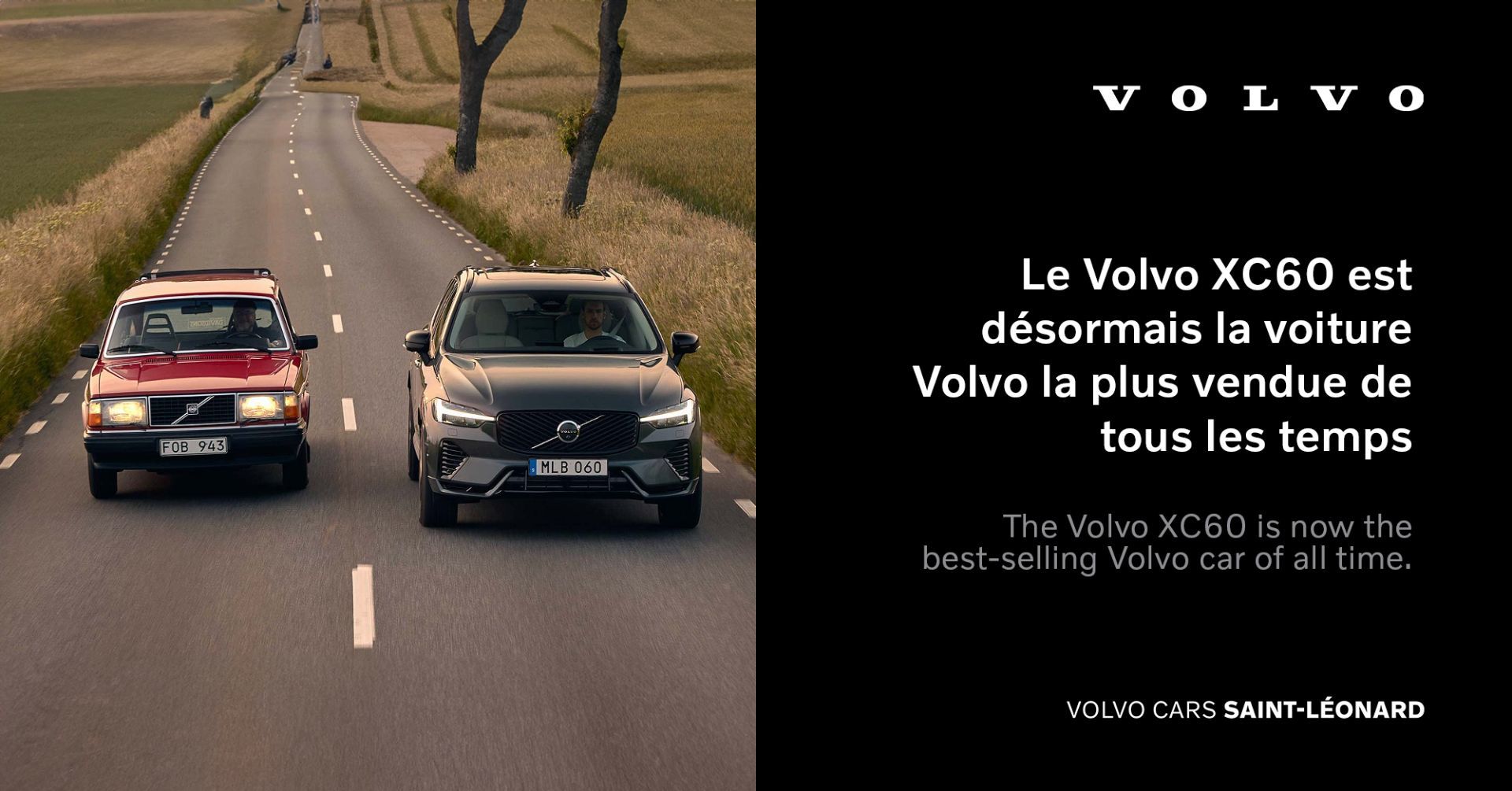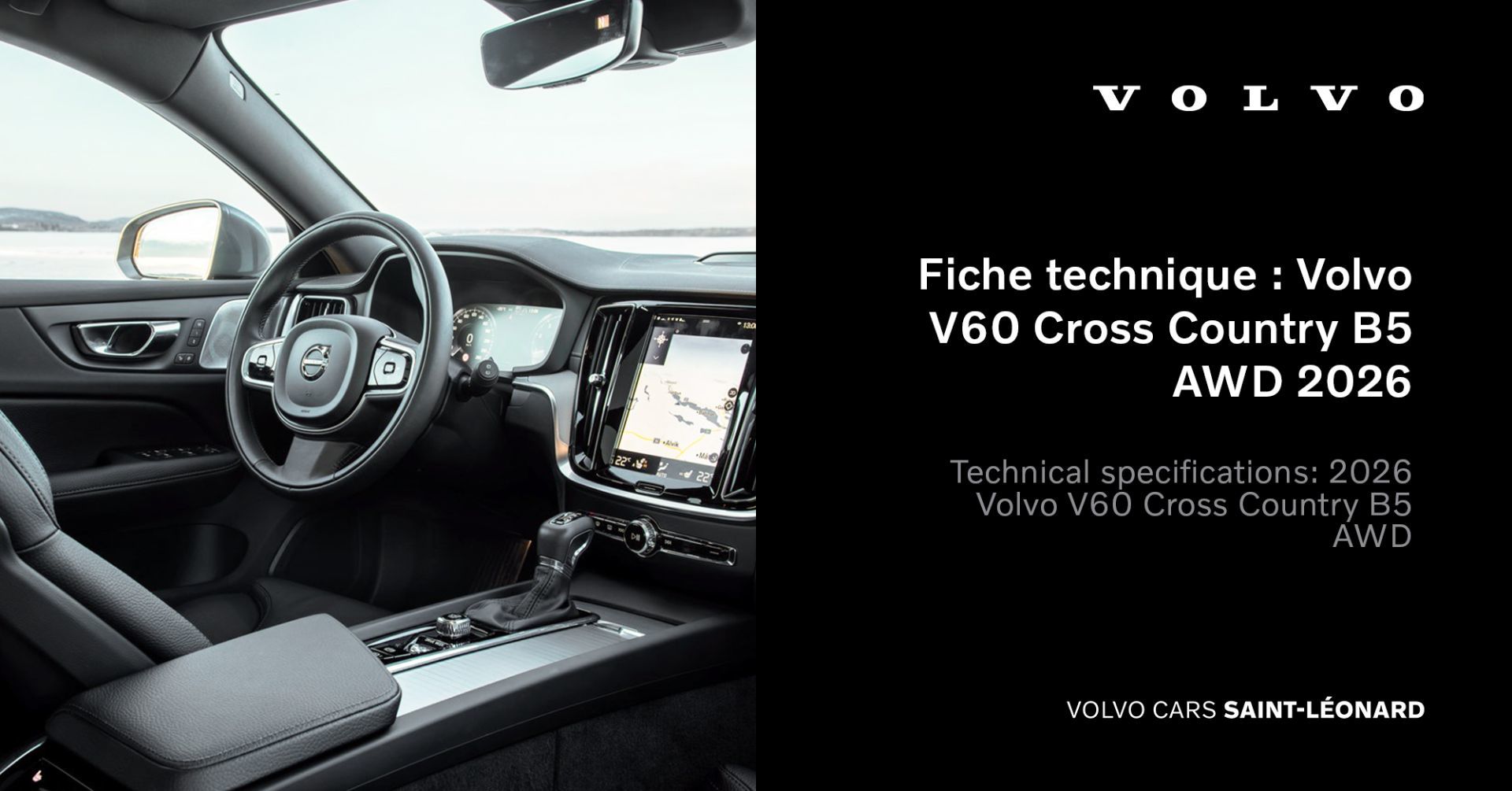
The Volvo XC60 is now the best-selling Volvo car of all time.
With over 2.7 million units sold worldwide, the Volvo XC60 has just surpassed a monument of Swedish automotive history: the Volvo 240. This ranking...
Read moreVolvo Cars Saint-Léonard
Volvo Cars Saint-Léonard
4315 Boulevard Métropolitain Est, Montreal, QC, H1R 1Z4
Volvo has as many stories to tell as it has technological innovations over the years. One of them - the takeover of the Volvo car division by Ford.
From 1999 to 2010, the Swedish brand was owned by the Ford Group via Premier Automotive Group. A collaboration that produced iconic models and enabled both brands to rise through the global market.
In this article, we explain in detail the reasons for the takeover and what this collaboration has brought to the Volvo Group, technologically speaking.
Founded in Sweden by Assar Gabrielsson and Gustaf Larson (two industrialists), Volvo's first foundations were laid over lunch between these two friends who shared the ambition of creating cars capable of withstanding the rigours of Swedish roads and climate.
In 1929, Volvo launched its first six-cylinder model, the PV651, which quickly became the preferred choice for taxis throughout Sweden thanks to its reliability.

Over the following decades, Volvo developed and diversified its range of vehicles, while working primarily on its safety systems. In 1959, it introduced the revolutionary three-point safety belt, still considered one of the most important innovations in car safety.
In 1966, the Volvo 164 model was launched and hailed for its safety innovations, confirming Volvo's reputation as "the safest car in the world."
Over the years, the brand continued to innovate before reaching a major milestone on 8 March 1999, when Volvo shareholders approved the sale of the car division to Ford Motor Company. This move under Ford's wing gave Volvo new resources to expand globally, and the year 2000 saw a sales record, with 422,100 vehicles sold.
Ford's decision to acquire Volvo was motivated by its ambition to strengthen its position in the European luxury car market (acquisition of Jaguar, Land Rover and Aston Martin in parallel) in order to gain access to Volvo's safety technologies and engineering expertise.
Volvo also offered Ford a solid foothold in Europe, particularly in the north, a market where competition from German and Japanese manufacturers was intense. Not to mention the contribution of innovations in terms of ecology and engine performance, to support Ford's plans to meet new and evolving European environmental standards.
But it wasn't just Ford that benefited. In the late 1990s, Volvo faced a number of challenges, mainly in terms of financial resources to compete with German manufacturers such as Mercedes-Benz and BMW, who dominated the premium car segment.
In 2010, after only half-heartedly meeting its targets, Ford sold the Swedish brand to the Geely group, which continued to strategically develop the brand around three fundamental pillars: safety, the Scandinavian spirit and the ecological transition.
À partir du rachat de Ford, une dizaine de modèles sont mis en production pour concurrencer les marques germaniques. Pour certains d’entre eux, encore présents dans notre gamme.
The Volvo C30 marks the carmaker's entry into the premium two-door segment, with the aim of competing with the Audi A3, BMW 1 Series and Mercedes A-Class.
To stand out from the crowd, it features a design not seen since the Volvo 480, with a large glass rear window.

The Volvo S40 and V50 have been designed on the P1 platform, shared with the Ford Focus and Mazda3, a Ford strategy aimed at reducing production costs while making these models more affordable.
With this platform, Volvo was able to offer compact cars without compromising on safety, incorporating a reinforced passenger compartment to protect against side impact, ABS brakes and a whiplash protection system.
These models also included a more powerful T5 version, developing up to 230 bhp, to attract young drivers looking for performance in a compact and dynamic format.

The Volvo S60 had side airbags as standard, a whiplash protection system (WHIPS) and a stability control system (DSTC).

The S60 R model launched in 2003 had a 300bhp turbo engine, all-wheel drive (AWD) and active suspension, reinforcing the brand's sporty positioning.
Even though the second-generation Volvo S60 was produced beyond the Ford era, it still has some influences from the American brand prior to its acquisition by Geely in 2010.
For example, the Volvo S60's chassis is a modified version of the Ford EUCD platform, which is shared with several Ford vehicles, including the Ford Mondeo.

"Volvo is renowned for two things: making some of the most family-friendly and safest cars in the world. The XC60 reinforces that reputation," hailed Steve Fowler, editor of "What Car?" magazine in 2008.
The XC60 was the first model to be fitted as standard with City Safety, an automatic emergency braking system to avoid low-speed collisions.

Beyond the technology, the XC60 has become a flagship model for Volvo, combining the practicality of an SUV with a compact size ideal for European cities. It also attracted younger customers thanks to its prominence in the Twilight saga.
Today, the Volvo XC60 is still one of the best-selling compact SUVs in the range, alongside the Volvo XC40.
At the Detroit Auto Show on January 7, 2002, Volvo Cars launched a new model that was eagerly awaited, particularly in America, which was longing for a Volvo SUV - the XC90.

Even if the competition is omnipresent in the United States, the Volvo XC90 has managed to stand out thanks to technologies that are non-existent in the competition:
In any case, the Volvo XC90 continues to satisfy you because it has been renewed for 2025 in a new design, alongside its electric version, the Volvo EX90.
No need to introduce the Volvo V70, successor to the legendary Volvo 850. Here, Ford has continued the solidity of the 850 while adding new safety technologies that were beginning to be deployed throughout the range.

And let's not forget the continuation of the Cross Country range, which enabled adventurous drivers to overcome the most rugged terrain, or the V70R version, which developed 300 bhp thanks to a 5-cylinder turbo.
The second-generation S80 was unveiled at the Geneva International Motor Show in 2006, and was based on a completely new architecture, the EUCD platform.

The addition of a saloon to the range was in response to demand from drivers for a more practical car with the latest technology for its generation:
During the Ford era, Volvo was not content to produce family models. In 2006, the Swedish brand repeated the Volvo C70, but with a different approach.

The coupé version was dropped from the range, leaving only the convertible version, which was equipped with a retractable hardtop that allowed this model, developed in collaboration with Pininfarina, to offer a cabriolet and coupé alternative.
In less than 30 seconds, you could be driving with your hair blowing in the wind or your hair dry.
In terms of safety, the Volvo V70 offered, for the first time on a convertible, a head airbag and a rear roll bar that deploy automatically in the event of a rollover.
During the Ford era, Volvo benefited from investments to develop technologies such as automatic braking (City Safety) and Blind Spot Information System (BLIS), which have become standard equipment throughout the modern Volvo range. Ford has also contributed to Volvo's expansion on the world market, particularly in the United States, thanks to its emblematic models such as the XC90, enabling the Volvo XC60 to arrive almost in conquered territory.
Finally, the industrial experience acquired under Ford has enabled Volvo to make the transition to 4-cylinder engines (Drive E), with lower CO2 emissions and fuel consumption, which has also prepared the brand for its transition to hybrid and now electric engines.

The Volvo XC60 is now the best-selling Volvo car of all time.
With over 2.7 million units sold worldwide, the Volvo XC60 has just surpassed a monument of Swedish automotive history: the Volvo 240. This ranking...
Read more
Technical specifications: 2026 Volvo V60 Cross Country B5 AWD
The Volvo V60 Cross Country B6 AWD is a raised wagon that targets modern families and active professionals looking for an alternative to SUVs,...
Read more
2026 Volvo EX40: new features, photos, and pricing
Following the electrification of the Volvo EX40 in 2023, the Swedish brand continues to update its compact SUV to better meet your needs. For the...
Read more